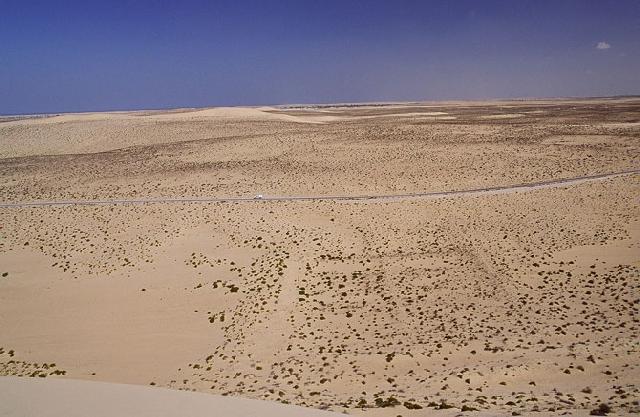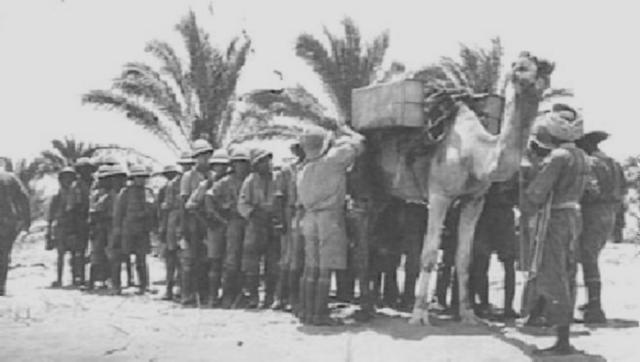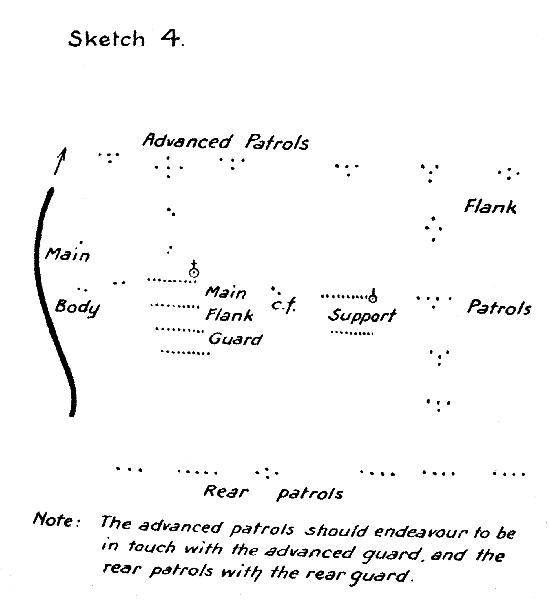Topic: BatzS - Bir el Abd
Bir el Abd
Sinai, 9 August 1916
Outline

[Photo by Terry Kinlock, author of Devils on Horses: in the Words of the Anzacs in the Middle East 1916-19.]
Keeping constant pressure on the Turks resulted in one engagement tending to merge into the next, as was the case with Katia and Bir el Abd. This was an oasis 22 miles east of Romani, on the track to El Arish.
El Arish was on the south-east corner of the Mediterranean and came to be considered by the Anzacs as some far-off Holy Grail. If the enemy could be dislodged from Bir el Abd, he must retreat the 50 miles further on to El Arish because there was almost no water between the two places. El Arish was close to the Palestine border, where the Sinai desert ended. Elopes and dreams began to form and tantalise. They could get off the sand! Mirages, milk-and-honey visions of plains and trees, cities, grass feed, roads, water, flowers beckoned.
First things first: attack the enemy rearguard, capture his guns, destroy the remainder of his force. Reconnaissance early on 8 August showed that the Turks had abandoned Oghratina. Patrols probed forward and found him at Bir el Abd.
Chauvel shifted his HQ forward to Oghratina, with the New Zealand and Yeomanry brigades. Royston, temporarily in command of both the 1st and 2nd Light Horse Brigades, was to march from Katia overnight and at daylight on the 9th take up a position just north-east of Abd. The New Zealanders and the 3rd Light Horse Brigade were to start the advance, the first directly on the Turks centre, the second to swing round behind them from the south, blocking their retreat. The Yeomanry were in reserve.
The whole ANZAC Mounted Division would be engaged, though it was reduced by sickness and exhaustion of both horses and men to 3000 dismounted rifles. Two regiments of Royston's were down to 180 rifles and the 7th Regiment mustered 214. But the Turks were said to be weak and the operation looked to be relatively easy. Because of the distances, no infantry were to be used and the job fell to the mounted troops again.
The Turks proved to be decidedly strong: 6000 men deployed on commanding sandhills, well supported by artillery.
The overnight ride by the 1st and 2nd Brigades was marked by precipitous sand cliffs, up or down which no horse would have gone, had it seen them. With daylight, the troopers were awed to see what they had come through.
At 4 am, the New Zealanders attacked the Turkish centre and the 3rd Light Horse Brigade started its encircling movement from the south. They encountered strong resistance. Royston's brigades, coming in from the north, were also checked. The dispositions left large gaps between the ANZAC units: 800 yards between Chaytor's New Zealanders and the 2nd Brigade on the left, a mile between Chaytor and the 3rd Brigade on the right.
Suddenly, things started to look grim. There were fire fights all along the line. The scattered Anzacs, after galloping in until the machine-gun and artillery fire became too heavy to risk the horses, dismounted and sent them back. For some hours, it was a near stalemate of no advance and no retreat, though marked by particular strokes of brilliance such as a bayonet charge by the Wellingtons, before which the Turks refused the steel and bolted, and the 'admirable tenacity and reckless courage' of the out-gunned batteries of Royal Horse Artillery, which from close behind the dismounted men waged an unequal contest with the Turkish guns.

About midday, the Turks counterattacked from one end of the line to the other and threw Chauvel's troops on the defensive. There were seesawing attacks and counterattacks for two hours, and while the ANZAC front was unbroken, they suffered a net loss of ground. Sniffing victory, the Turks' fire reached a pitch of concentration never experienced before, even at Gallipoli.
By 4.30 Royston's left had been almost completely turned and the Turks threw between 2000 and 3000 men against his centre. The ensuing crescendo of fire was most destructive to both sides. The New Zealanders gave no ground in their forward position, even as a retirement of the 3rd Brigade on their right and another by Royston's brigades on their left exposed them to enfilade fire on both sides. Still they hung on.
At 5.30, Chauvel ordered a general withdrawal. It was then a matter of getting away unscathed in a fighting retreat, another searching test of steadiness under fire, with troop deliberately laying back on troop and squadron laying back on squadron, while keeping the enemy at bay with their own shooting.
That accomplished, the Anzacs were once more exhausted. They had ridden all night and fought from daylight to sunset on a quart of water in the heat of a ship's stokehold. Their elbows were blistered from constant contact with the scalding sand as they fired their weapons. Chauvel's choice was between bivouacking that night nearby and resuming the assault next day, or retiring to Oghratina. After consulting his brigade commanders, he opted for the latter, posting the 3rd Brigade out on the flank.
Two hundred and ten wounded were carried out of Abd and greatly hampered the withdrawal, but with the exception of a few New Zealanders their countrymen could not possibly reach, all were borne back safely. The standard 'ambulance' was a camel cacolets, or litter - a narrow, swaying pannier atop the beast that so tormented wounded men they came to be feared by the Anzacs, and led to the Australian innovation of sand carts. However, these could not be deployed to the front line and the men were taken out on horses; and their preference then was to ride them home. Two men of the 5th Regiment with broken thighs rode home from Abd and one survived.
This 'law' about saving wounded men was dangerous and frowned on by anonymous high command mandarins, but the men went into action knowing that if it was humanly possible to be carried out, they would not be allowed to fall into the Turks' hands, or left to the murderous Bedouins who prowled around the edges of battlefields. As vindication, after two and a half years of constant fighting, only 73 Light Horsemen had been taken prisoner, most of them wounded, and not a single officer was captured. But they themselves captured between 40,000 and 50,000 Turks.
Casualties for Bir el Abd were 73 dead and 243 wounded.

Extracted from the book produced by Lindsay Baly, Horseman, Pass By, East Roseville, N.S.W. : Simon & Schuster, 2003, Ch. 5.
Further Reading:
Battle of Romani, Sinai, August 4 to 5, 1916
Bir el Abd, Sinai, 9 August 1916
Battles where Australians fought, 1899-1919
Citation: Bir el Abd, Sinai, 9 August 1916, Outline










